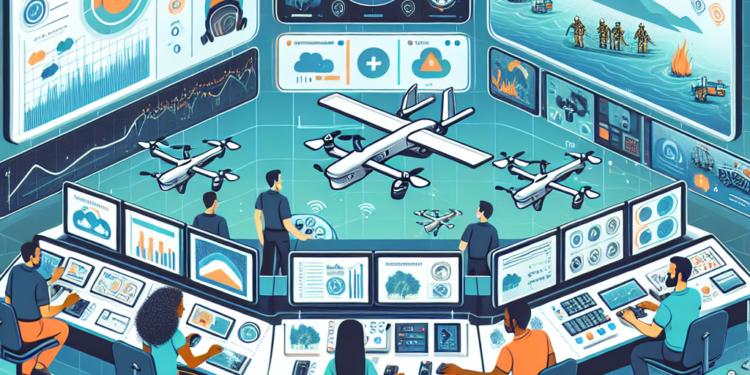Artificial intelligence (AI) has rapidly become a critical tool in disaster management, aiding in everything from early warning systems to search and rescue operations. The incorporation of AI into disaster management is revolutionizing the way we respond to natural disasters and emergencies, enabling faster and more effective responses that save lives and minimize damages. In this article, we will explore the various ways in which AI is playing a crucial role in disaster management and how it is shaping the future of emergency response.
One of the key areas in which AI is making a significant impact in disaster management is through early warning systems. AI technology is being used to analyze vast amounts of data from various sources, including satellite imagery, weather patterns, and sensor networks, to detect potential disasters before they occur. By identifying patterns and trends in the data, AI algorithms can provide accurate and timely warnings to at-risk communities, giving them crucial time to prepare and evacuate if necessary.
For example, in the case of hurricanes and typhoons, AI algorithms can track the storms’ trajectories and predict their paths with increasing accuracy. This enables authorities to issue evacuation orders and mobilize resources well in advance, minimizing the impact of the storm on vulnerable populations. Similarly, in the case of earthquakes, AI can analyze seismic data and identify areas at high risk of seismic activity, allowing authorities to take preventive measures to mitigate the damage.
In addition to early warning systems, AI is also being used to improve disaster response efforts. AI-powered drones equipped with cameras and sensors are being used to conduct aerial surveys of disaster-stricken areas, providing real-time data on the extent of damages and the location of survivors. This information is crucial for directing rescue teams to the right locations and coordinating relief efforts effectively.
Furthermore, AI algorithms are being used to analyze social media feeds and emergency calls to identify areas in need of immediate assistance. By processing vast amounts of unstructured data, AI can quickly pinpoint critical information, such as the location of trapped individuals or the availability of resources in different areas. This enables first responders to prioritize their efforts and make more informed decisions in a fast-paced and chaotic environment.
Moreover, AI-powered robots are being used in disaster zones to perform tasks that are too dangerous or difficult for humans. For example, robots equipped with sensors and cameras can navigate through collapsed buildings to locate survivors and assess the structural integrity of the buildings. These robots can also be used to deliver medical supplies, food, and water to inaccessible areas, reducing the risk for human responders.
The use of AI in disaster management is not limited to the response phase but also extends to the recovery and rebuilding phases. AI algorithms can analyze satellite imagery to assess the extent of damages and plan reconstruction efforts. By identifying areas in need of repair and estimating the required resources, AI can help authorities prioritize their rebuilding efforts and allocate resources more efficiently.
Additionally, AI technologies such as predictive analytics are being used to forecast the long-term impacts of disasters and plan for future resilience. By analyzing historical data and simulating different scenarios, AI can help decision-makers develop strategies to mitigate the impacts of future disasters and improve the overall resilience of communities.
However, despite the numerous benefits of AI in disaster management, there are also challenges and ethical considerations to be addressed. One of the main challenges is the need for data privacy and security, as AI systems rely on vast amounts of data to function effectively. Ensuring that personal data is protected and used ethically is crucial to maintaining trust in AI technologies and preventing misuse.
Moreover, there is a need for transparency and accountability in the development and deployment of AI systems in disaster management. AI algorithms are often complex and opaque, making it difficult to understand how they make decisions and assess their reliability. It is essential for developers to explain the inner workings of AI systems and provide mechanisms for auditing and monitoring their performance to ensure they are used responsibly.
In conclusion, AI plays a critical role in disaster management by improving early warning systems, enhancing disaster response efforts, and facilitating recovery and rebuilding processes. The integration of AI into disaster management has the potential to save lives, minimize damages, and improve the overall resilience of communities in the face of natural disasters and emergencies. By harnessing the power of AI technology, we can transform the way we prepare for, respond to, and recover from disasters, shaping a safer and more resilient future for all.













